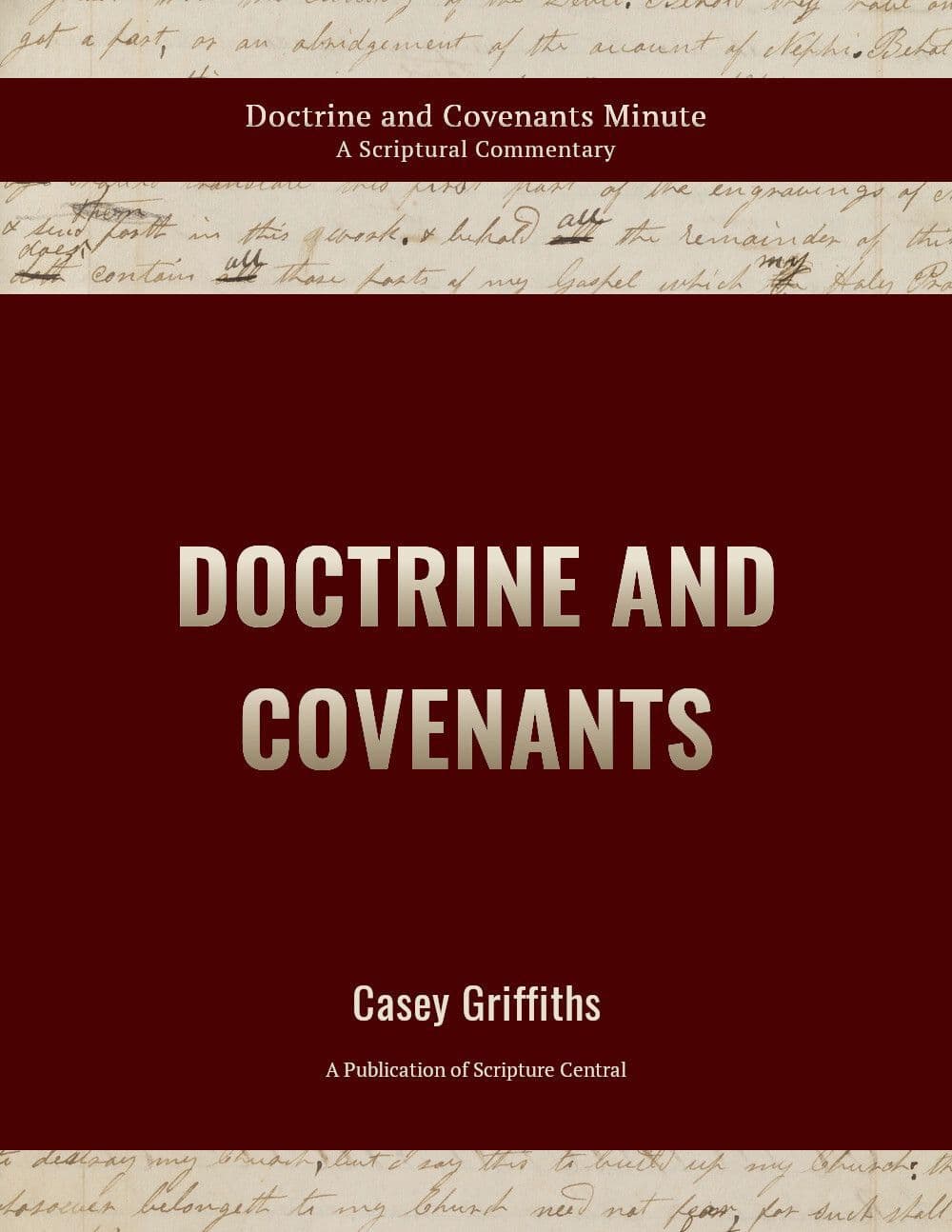Book
144 Chapters

In spring 1838, more and more Latter-day Saints continued to stream into Caldwell County in Northwest Missouri, the new gathering place for the Church. During this time Church leaders identified between “forty and fifty locations” north of the Church headquarters at Far West for possible settlement.1 About a year earlier, Lyman Wight had traveled about twenty-five miles to the north of Far West, Missouri. Wight built a cabin and established a ferry near the Grand River in Daviess County at a place called Spring Hill. In mid-May of 1838, Joseph Smith traveled with a company of Church leaders to Wight’s settlement at Spring Hill, where they laid out a plan for a city.
Doctrine and Covenants 116 is an excerpt from Joseph Smith’s journal, recorded on May 19, 1838. The entire entry for the day reads as follows:
<19 sat> The next morning we struck our tents, and marched [and] crossed Grand river at the mouth of Honey Creek at a place called Nelsons ferry, Grand River is a large[,] beautiful[,] deep[,] and rapid stream and will undoubtedly admit of steamboat and other water craft navigation, and at the mouth of honey creek is a splendid harbor for the safety of such crafts, and also for landing freight[.] We next kept up the river mostly in the timber for ten miles, until we came to Col. Lyman Wight’s, who lives at the foot of Tower Hill, a name appropriated by President Smith, in consequence of the remains of an old Nephitish Altar an[d] Tower, where we camped for the sabbath, In the after part of the day, Presidents Smith and Rigdon and myself, went to Wights. Ferry about a half mile from this place up the river, for the purpose of selecting and laying claims to [a] city plot near said Ferry, in Davis [Daviess] County Township 60, Range 27 & 28, and Sections 25, 36, 31, 30, which was called Spring Hill[,] a name appropriated by the brethren present, But after wards named by the mouth of [the] Lord and was called Adam Ondi Awmen [Adam-ondi-Ahman], because said he[,] it is the place where Adam shall come to visit his people, or the Ancient of days shall sit as spoken of by Daniel the Prophet.2
The journal excerpt, which includes Doctrine and Covenants 116, was printed as part of the multivolume History of the Church. Acting under the direction of Brigham Young, Orson Pratt extracted the revelatory part of the journal excerpt and included it in the 1876 edition of the Doctrine and Covenants.3
See “Historical Introduction,” Journal, March–September 1838, pp. 43–44, JSP.
1 Spring Hill is named by the Lord aAdam-ondi-Ahman, because, said he, it is the place where bAdam shall come to visit his people, or the Ancient of Days shall sit, as spoken of by Daniel the prophet.
The name of Adam-ondi-Ahman was revealed several years earlier to Joseph Smith during a patriarchal blessing given to his father on December 18, 1833. The blessing was later added to the Doctrine and Covenants as part of section 107 (D&C 107:53–57). The revelation in section 116 that designates Spring Hill as Adam-ondi-Ahman refers to a visitation from Adam which has not yet occurred, but this future event will likely be in the same location where Adam anciently gathered “the residue of his posterity who were righteous, into the valley of Adam-ondi-Ahman, and there bestowed upon them his last blessing” (see commentary on D&C 107:53–57).
The prophecy of Daniel the prophet that the Lord refers to in section 116 is found in Daniel 7:9–14, in which Daniel declared:
I beheld till the thrones were cast down, and the Ancient of days did sit, whose garment was white as snow, and the hair of his head like the pure wool: his throne was like the fiery flame, and his wheels as burning fire . . . behold, one like the Son of man came with the clouds of heaven, and came to the Ancient of days, and they brought him near before him. And there was given him dominion, and glory, and a kingdom, that all people, nations, and languages, should serve him: his dominion is an everlasting dominion, which shall not pass away, and his kingdom that which shall not be destroyed (Daniel 7:9, 13–14).
On many occasions, the Prophet Joseph Smith positively identified the “Ancient of Days” as Adam. In an 1839 discourse recorded by Willard Richards, the Prophet declared:
[When Daniel 7] speaks of the Ancient of days, he means the oldest man, our Father Adam, Michael; he will call his children together and hold a council with them to prepare them for the coming of the Son of Man. He, (Adam) is the Father of the human family and presides over the Spirits of all men, and all that have had the keys must stand before him in this grand council. This may take place before some of us leave this stage of action, the Son of Man Stands before him and there is given him glory & dominion. Adam delivers up his stewardship to Christ, that which was delivered to him as holding the Keys of the Universe, but retains his standing as head of the human family.”4
In an 1877 discourse Orson Pratt further enlightened the Saints on the meaning of the name “Adam-ondi-Ahman.” He explained, “We have then an understanding that it was the place where Adam dwelt. Perhaps you may be anxious to know what ‘Ondi-Ahman’ means. It means the place where Adam dwelt. ‘Ahman’ signifies God. The whole term means Valley of God, where Adam dwelt. It is in the original language spoken by Adam, as revealed to the Prophet Joseph.”5
Book
144 Chapters
Items in the BMC Archive are made publicly available for non-commercial, private use. Inclusion within the BMC Archive does not imply endorsement. Items do not represent the official views of The Church of Jesus Christ of Latter-day Saints or of Book of Mormon Central.